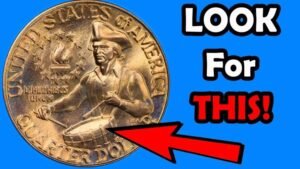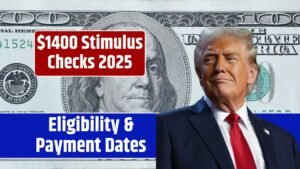Have you ever checked your old coins for a hidden fortune? The 1913 Liberty Head Nickel is one of the rarest and most valuable coins in the world, with some selling for millions at auctions. This five-cent coin, which shouldn’t even exist, has a mysterious story that excites coin collectors everywhere. In this article, we’ll break down its history, why it’s so special, and how to spot one in simple terms. Whether you’re new to coin collecting or just curious, read on to learn about this legendary treasure and how to hunt for it.
What Is the 1913 Liberty Head Nickel?
The 1913 Liberty Head Nickel is a five-cent coin that was never supposed to be made. In 1913, the U.S. Mint switched from the Liberty Head design, which featured a woman’s face (symbolizing liberty), to the new Buffalo Nickel design. Official records show no Liberty Head Nickels were made that year. But somehow, five of these coins were created, making them incredibly rare. They’re now considered a “holy grail” for coin collectors because of their scarcity and mysterious origin.
The Design of the Coin
The Liberty Head Nickel, designed by Charles E. Barber, was used from 1883 to 1912. The front (obverse) shows a profile of Lady Liberty with the word “LIBERTY” on a crown and 13 stars for the original U.S. colonies. The back (reverse) has a large Roman numeral “V” for five cents, surrounded by a wreath. The 1913 versions look the same but stand out because they were made in secret.
Why Is the 1913 Liberty Head Nickel So Valuable?
This coin’s value comes from its rarity, history, and the mystery behind its creation. Only five are known to exist, with two in private hands and three in museums. Here’s why they’re worth millions:
- Extremely Rare: With only five coins known, they’re among the rarest in the world.
- Mysterious Origin: No one knows exactly how they were made, but many believe a mint worker named Samuel Brown created them secretly.
- High Auction Prices: One sold for $3.7 million in 2010, and another for $4.56 million in 2018.
The combination of scarcity and intrigue makes these coins a dream for collectors. Owning one is like holding a piece of American history with a touch of scandal.
The Mysterious Story Behind the Coin
The 1913 Liberty Head Nickel first appeared in 1919 when Samuel Brown, a former U.S. Mint worker, showed one at a Chicago Coin Club meeting. In 1920, he displayed all five at an American Numismatic Association convention. Brown had placed ads offering to buy these coins for $500 each, which some think was a way to make them seem legitimate. Many historians believe he struck them illegally at the Philadelphia Mint in 1913, possibly taking them when no one was looking.
After Brown sold the coins in 1924, they passed through collectors like Colonel E.H.R. Green and King Farouk of Egypt. Today, two are in museums (Smithsonian and ANA Money Museum), and three are privately owned. One, the Walton specimen, was thought lost for decades until it was rediscovered in 2003.
How to Identify a 1913 Liberty Head Nickel
Spotting a real 1913 Liberty Head Nickel is tough since only five exist, and fakes are common. Here’s how to check if you have one:
- Check the Date: Look for “1913” on the front. Most Liberty Head Nickels are from 1883 to 1912.
- Examine the Design: The front should have Lady Liberty, and the back should have a “V” with a wreath.
- Look for Quality: Two of the five coins are “proof” (super shiny, made for collectors), while three are standard.
- Get It Verified: Always have a suspected coin checked by experts at PCGS (Professional Coin Grading Service) or NGC (Numismatic Guaranty Corporation). Fakes are often made by altering other years, like 1918.
Here’s a table comparing the 1913 Liberty Head Nickel to regular nickels:
| Feature | Regular Nickel (1883–1912) | 1913 Liberty Head Nickel |
|---|---|---|
| Year | 1883–1912 | 1913 |
| Quantity Made | Millions | Only 5 known |
| Design | Liberty Head with “V” | Same, but unauthorized |
| Value | $1 to $100 | $1 million to $5 million |
If you think you have one, don’t clean it—cleaning can ruin its value. Get it checked by professionals.
Fascinating Facts About the 1913 Liberty Head Nickel
This coin has a wild history. One was featured in a 1973 episode of Hawaii Five-O called “The $100,000 Nickel,” where thieves tried to steal it. Another, the McDermott specimen, was carried around by its owner to show off at bars, leaving it with unique wear marks. It’s now in the ANA Money Museum. The Eliasberg specimen is the best-preserved, graded at 66 by PCGS and NGC, making it the “crown jewel” of coins. These stories add to the coin’s legend and make collectors dream of finding one.
Tips for Coin Collectors
Want to start hunting for rare coins? Try these tips:
- Check Old Collections: Look through family coin jars or inherited collections.
- Learn About Coins: Read books or visit websites like PCGS or NGC to understand coin value.
- Store Safely: Keep coins in protective holders to prevent damage.
- Use Trusted Experts: Have coins graded by PCGS or NGC to confirm authenticity.
- Sell Wisely: Use reputable auction houses like Heritage Auctions or Stack’s Bowers for high-value coins.
Coin collecting, or numismatics, is a fun way to explore history and maybe strike it rich.
Common Questions About the 1913 Liberty Head Nickel
Here are simple answers to popular questions:
- Can I find one in change? Very unlikely. Most are in museums or private collections.
- Are there fakes? Yes, many fakes exist, often made by altering other dates. Always verify with experts.
- Why is it so expensive? Its rarity (only five exist) and mysterious story drive up the price.
These answers help beginners understand the coin’s value.
Key Terms Explained in Simple Words
Coin collecting has some tricky words. Here’s a table to make them easy:
| Difficult Word | Easy Explanation |
|---|---|
| Numismatics | Collecting and studying coins. |
| Proof Coin | A shiny coin made specially for collectors. |
| Minting | The process of making coins at a mint. |
| Obverse | The front side of a coin (like the “heads” side). |
| Reverse | The back side of a coin (like the “tails” side). |
| Grading | Checking a coin’s condition and giving it a score, like PR-66 (proof, high quality). |
| Authenticate | Proving a coin is real, not fake. |
This table clears up confusing terms for new collectors.
Conclusion: Could You Own a Million-Dollar Nickel?
The 1913 Liberty Head Nickel is a coin collector’s dream, with only five in existence and a mysterious past that adds to its allure. Its million-dollar auction prices and intriguing history make it a legend in the world of numismatics. By checking old coin collections and learning to spot its features, you might uncover a treasure. Even if you don’t find one, the thrill of hunting for rare coins is exciting and connects you to history. Start looking through your coins today—your next big find could be waiting! Coin collecting is a rewarding adventure, so grab a magnifying glass and dive in.




